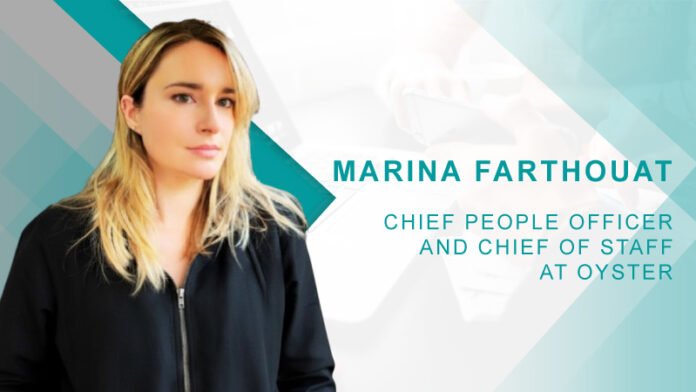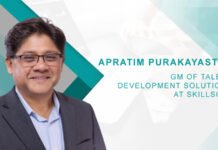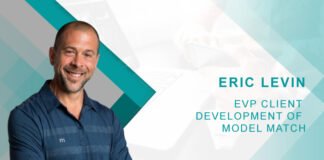Welcome to HRTechCube, Marina. To begin, can you please share a bit about your professional journey and how it led you to your current dual role as Chief People Officer and Chief of Staff at Oyster?
I’ve worked in HR across industries — from financial services and insurance to legal, fintech, and now technology. I chose this path because it gave me the freedom to move where markets were changing, and in tech I found the pace and curiosity I’d been looking for.
Today, I also serve as Chief of Staff because the CEO and executive team at Oyster wanted me in this position. I’m simple when it comes to my career, my approach can be summed up as: “if it’s interesting, just say yes and try it out” and “if it’s very boring, say no even if it pays better.” So I decided to say yes to this new set of responsibilities. It’s often said that the biggest challenges for founders and CEOs are people challenges: finding the right talent, supporting them, and navigating conflict and friction that arises in execution. That’s why a people leader can be a natural fit in this role. My job is to help the CEO and executive team focus on the mission by making sure decisions move forward, teams stay aligned, and problems get solved.
I think of it as the “do what needs to be done” role. Whether it’s unblocking a cross-functional decision, resolving friction between teams, or coordinating board content, it lands with me. I also partner with our head of strategy and product and CEO to evaluate potential M&A opportunities in this fast-moving market. It’s been a steep learning curve, but also a rewarding one — connecting strategy with execution, and supporting the work of incredibly talented people across the organisation.
Oyster’s recent Global Hiring Trends + Impact Report shows a clear rise in project-based roles. You’ve described this as the rise of the “Expertise Economy.” How should companies rethink talent acquisition in light of this shift?
A natural segue from the Chief of Staff role is hiring strategy. I often say, “I want AI to be the new Chief of Staff.” Not because AI replaces the role entirely, but because I think we should all think of our roles through that lens now: AI handling analysis, planning, information flow, so humans can focus on the work only humans can do. This includes communication, guidance, and decision-making. And, extremely importantly, people are still very much needed to review and adjust AI output.
Until recently, hiring followed a simple logic: if something needed doing, you hired someone. Work was built around people, with processes and systems layered in afterwards. That model is rapidly changing. Today, work is being reorganised around three complementary elements: processes and automation, AI, and human interaction. Combined with the rise of the expertise economy — more independent specialists, fewer full-time employees — we are moving toward a more fragmented, efficiency-driven workforce. Think of it as “Ford’s division of labour 2.0.”
For TA, this means the role is no longer just filling vacancies. It is about helping leaders architect teams at the intersection of AI, process, and people — or risk overhiring and layoffs when efficiencies inevitably arrive. Every new role must be considered through the lens of AI: how it integrates with technology, and what level of AI proficiency and prompting skill the candidate must bring. This shift is uneven across sectors, but it is accelerating fast.
For graduates, this carries a clear message: future employability depends not only on domain expertise but also on developing AI literacy, prompting skills, and clarity on where their value remains distinct from what AI can absorb.
And perhaps the sharpest question one can ask to future-proof a career is this: “How can AI do my job?” Because if you relentlessly try to make yourself redundant, paradoxically, you’re the one who remains indispensable.
You challenge the traditional “hero-leader” model in favor of a team-first, human-centric leadership style. How can companies start operationalizing this shift—especially across global, asynchronous teams?
I do challenge this idea — thank you for raising it. Most people at work don’t need to “follow a leader.” Of course, someone must set strategic direction, share the vision, and inspire action. But there is a difference between the CEO or figurehead of a company and the role of a direct leader/manager. The “hero-leader” myth has blurred that line, making managers believe they must become larger-than-life figures. In reality, what most people need from their direct leader who they report into is a partner — a side-kick who walks alongside them, listens, observes, and has the authority to step in to help them when needed.
The art of leadership lies in balancing two demands: setting a clear vision and showing the team you are in the trenches with them. These two needs sit at opposite ends of the spectrum — strategic and operational — and very few leaders can do both well. But more importantly, the hero-leader narrative distracts us from the real subject, which should be: the hero-team — this is where the work is actually done.
Operationalising this shift means focusing on the fundamentals of team design and enablement:
- Assemble the right team through hiring and internal mobility — hire and grow the right skills, get creative about cross-functional contributions, and don’t pigeon-hole talented people in one function just because that’s where they began.
- Draw from the unique strengths of the global hiring model — hire at scale and speed using global talent pools (Oyster can help), leverage time zone coverage and diversity of perspective, and give teams the guidance to turn those advantages into impact.
- Protect your teams’ time — deploy true async practices to benefit from time zone differences, use live time sparingly and intentionally, and design meeting cadences, content, and audiences for the right balance between transparency, sharing, and focus.
- Design communication for self-consumption — make information available and easy to digest asynchronously, while being crystal clear about what is essential “must know” content.
These are the real levers of success. Leadership matters — but more in its ability to equip teams for success and focus on important team topics, rather than as a standalone figure.
As you become more senior, it’s human nature for people to agree with you more easily. But don’t mistake that for a true reflection of the quality of your ideas. It is often a reflection of your senior title, even if unintentionally. Ensure you still find ways to stress-test your ideas and decisions effectively.
You’ve spoken out against the use of “culture fit” in hiring, calling it a code for bias. What practical steps can organizations take to remove subjectivity from their hiring processes while still protecting culture and values?
Over my career in previous roles, I’ve seen people defend “culture fit” with absolute conviction during hiring or promotion processes: “If someone doesn’t fit this part of our culture, they’re not for us.” I think this mindset is a legacy of the Netflix “Culture Deck” era, where binary slogans like “we only keep A players. We dismiss everyone else with a generous severance” were treated as doctrine, particularly in some US-based startups and scale-ups. In my view, the flaw is obvious: everyone interprets culture differently, so deciding whether someone “fits” is, by definition, subjective. Now, I know hiring decisions are subjective overall but at least with skills and requirements you can ensure there is much less bias than “culture fit” because skills are understood more consistently between interviewers than company values are. And importantly culture itself isn’t static — every new hire reshapes it.
Personally, I don’t like dogmatism, so I prefer to use culture materials to inform candidates about how we work, but select people only on skills and role requirements. If they qualify, and if they decide that our way of working suits them — they join us and they will hopefully add to our culture and evolve it. That is how you protect values without turning them into intolerant dogma.
Too often, people believe that announcing they have “strong views” about culture, will give them authority to be considered right. You will often hear some people in senior positions say something like “I have strong views about [xyz] aspect of our culture” with the intent to remove a candidate from consideration. But strong views are not the same as sound judgment. I feel lucky that the leadership team at Oyster is very smart on this topic. We are all very aligned in how we value giving the teams guidance on culture as well as freedom to add their own perspective as individuals.
Many leaders still struggle with remote work. You’ve argued that “remote resentment” is really a systems failure. What infrastructure or practices are essential for making remote work sustainable and high-performing?
Remote resentment is less about remote work itself and more about mindset and enablement. People tend to resent what they don’t understand fully or what they don’t feel comfortable with. Above all, people resent what they fear. Many leaders in senior positions today built their careers in offices. They simply haven’t had the experience of leading distributed teams until very recently, and many defaulted back to office or hybrid models after Covid. I remember attending an HR event in 2018 with CHROs from major European companies, including in technology, but also aerospace and consulting — it was across industries. When I raised remote work over a coffee break, some reactions were, “That’s impossible. How do you know people are working?” That exposed the first and most important barrier: trust. If leaders cannot trust their people and fear that they will not work at all, remote work fails before it even begins. And yet giving trust is not naive. You don’t measure hours at a desk; you measure output.
Once that mindset is in place, then the work shifts to systems. Remote work demands different tooling and practices, but the payoff is enormous: greater efficiency, more inclusive ways of working, global talent at scale, and better cost structures. For companies still office-based today, the task is clear: analyse the workforce strategy, communicate openly with teams, and deploy the right tools and practices. It is not about replicating the office online. It is about rethinking how work gets done — and done better.
Your Geo Strategy framework outlines different stages of global expansion. What are the biggest mistakes companies make when hiring internationally, and how can they be more intentional about it?
The first mistake is not hiring internationally at all. Many companies still focus on a single market because they are office-based or assume global hiring will be too complex. Yet once a company makes its first international hire, we know the second international hire follows quickly — because the model proves itself. The real hurdle is simply getting started.
The second mistake is thinking that enabling distributed teams is a heavy lift. It isn’t. Yes, it does require some planning (e.g. having onboarding designed for remote settings, using the right tools for flexible work, and planning around time zones). You’ll need enough timezone overlap between managers and reports, and between teams that collaborate, supported by strong async practices.
But the investment pays off immediately: smoother onboarding, better collaboration, and a foundation that scales as the company grows, benefitting the team regardless of their location. This is relevant to all companies now given that almost everyone has some form of flexibility and hybrid schedule within their teams.
You’ve taken a bold stance that AI’s true potential lies in leadership coaching rather than productivity hacks. Can you share how you personally use AI as a tool to support emotional intelligence and team management?
This isn’t my stance so much as an observation: beyond the huge productivity gains, AI is quietly coaching human interactions in ways few discuss.
The productivity gains are immense — industries are being reshaped and companies that aren’t AI-first won’t keep up. But people are also using AI to guide how they communicate. I’ve tested this from day one and found it troubling how often it sides with the user in conflicts, feeding the ego with “you’re right, they’re wrong.” That risks turning people against each other. Still, with discernment, it can help leaders adapt their tone to different audiences — and that is genuinely useful. If you know that your team needs a specific tone from you in a given context, you can get some help from AI to guide you on how to do this for your team, may that be through talking points or written support.
The value is real — but unless guided by ethics and a clear human compass, it could bring more disruption than we can manage. Work itself is being redefined, and governments and employers will soon need to rethink income, purpose, and meaning in a world of extraordinary productivity.
And if I sound gloomy, forgive me. I’m an optimist, but optimism without realism is just wishful thinking. Once again though this is when working for a company like Oyster is fascinating, because we’re at the forefront of defining work and as you can imagine this is a central topic for us. I recommend reading our CEO and Co-founder Tony Jamous’ article on this, called “In the age of Artificial Intelligence, we must reawaken Organic Intelligence.” His take is very insightful and an original perspective on the topic.
What’s one core personal strategy you use when building or advising globally distributed teams?
Adaptability. Every challenge sits on a continuum: strategy and operations, simplicity and complexity, global scale and local nuance. The work is in moving back and forth — knowing when to simplify, when to expose the detail, when to hold the line globally, and when to adapt locally. Leading and advising distributed teams demands that kind of constant flexibility.
What advice would you offer to organizations hesitant to hire early-career remote talent? How can they set these team members up for success?
I often hear senior executives express concern that entry-level hires won’t thrive remotely because they valued the social aspects of office life when they started out. That experience is real, but we shouldn’t generalize. Many early-career professionals today love the freedom of working where they want and are building their social lives differently — through co-working hubs, travel, online communities, and flexible spaces that blend work and connection. We’ve largely moved past the notion that remote means isolated.
The real priority is support. Early-career hires need buddies, mentors, and teammates who can guide them, especially in their first roles. Too many companies have let mentoring weaken. Investing in structured guidance and accessible mentorship will do far more to set remote talent up for success than bringing everyone into the same building.
Finally, what are your closing thoughts on what the future of work should truly prioritize—especially as companies navigate the intersection of global talent, tech, and human values?
To stay ahead, companies need to focus on two essential shifts. First, moving from local hiring to a truly global model. Second, adopting AI-first practices — but doing so responsibly, trying to minimise layoffs when possible and as much as possible, and real investment in upskilling.

Dr. Julie Donley, Executive Leadership Coach and Keynote Speaker
Marina Farthouat is Chief People Officer and Chief of Staff at Oyster, the global employment solution to employ, pay, and care for global teams. She leads the company’s people strategy and works to promote global employment by helping fast-growing companies hire and employ globally and at scale. Bringing a wealth of experience and knowledge leading People functions in remote organizations, most recently at Clickhouse and Elastic, Marina has garnered deep expertise in employee engagement and organizational development, as well as experience building and scaling culture and working practices.












